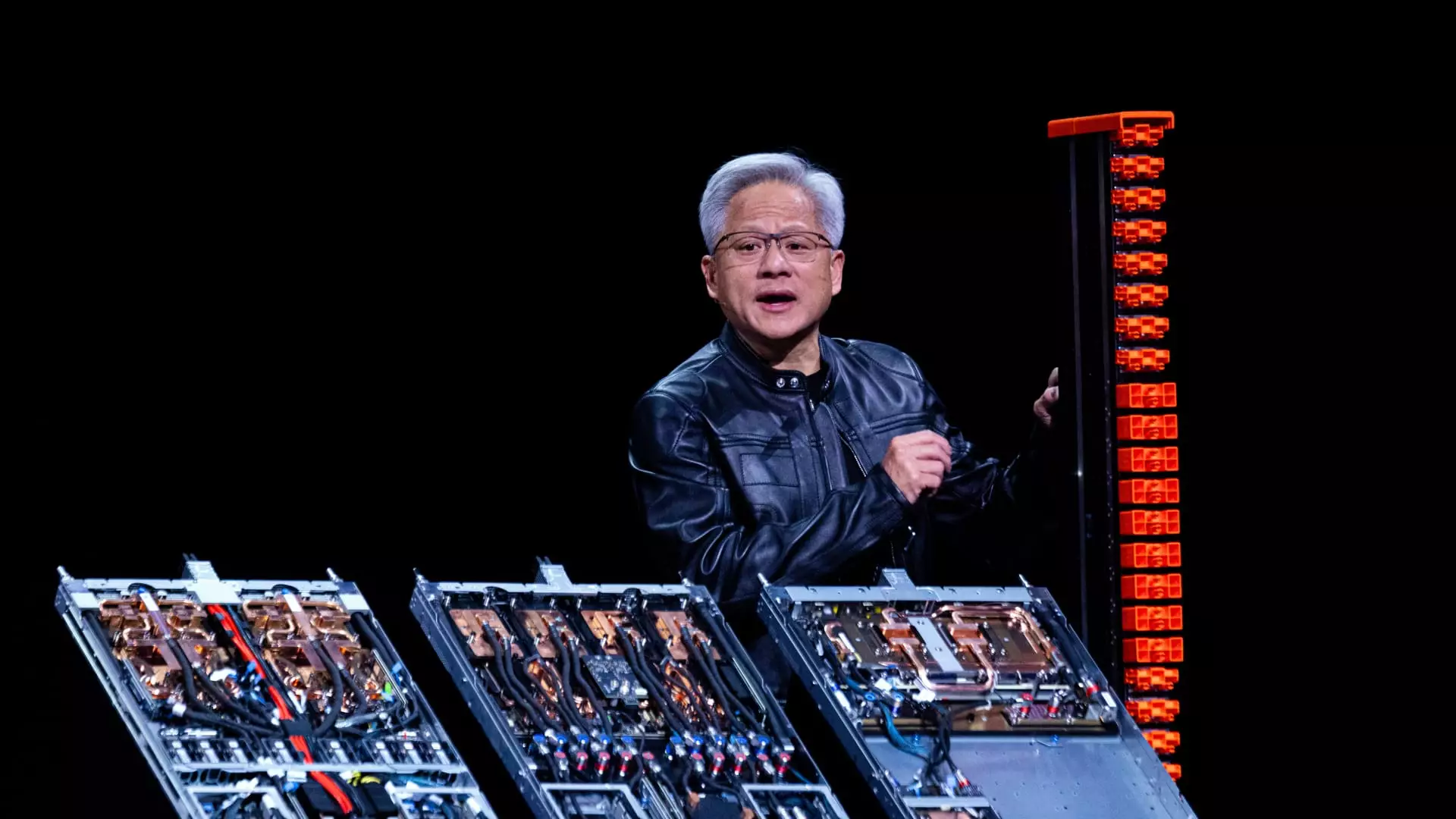In an audacious move, Jensen Huang, the CEO of Nvidia, unveiled an ambitious statement regarding the future of artificial intelligence (AI) computing at Computex 2025. The introduction of an innovative program named NVLink Fusion aims to fundamentally change how various processors, including non-Nvidia components, can interconnect with Nvidia’s powerful GPUs. This strategy could be seen as a bold repudiation of the traditional exclusivity that has characterized Nvidia’s ecosystem, suggesting a willingness to embrace a more collaborative approach in a fiercely competitive market. But beneath this surface of cooperation lies an inherent risk—one that not only challenges Nvidia’s monopolistic tendencies but could also fracture its profitability.
Prior to this initiative, Nvidia had tightly controlled its NVLink technology, which is designed to facilitate seamless communication between its CPUs and GPUs. Huang’s announcement that customers can now intermingle third-party central processing units (CPUs) and application-specific integrated circuits (ASICs) with Nvidia’s offerings presents a groundbreaking shift. The effort to provide this flexibility indicates a strategic pivot for Nvidia, clearly aimed at solidifying its role as the linchpin in modern AI infrastructures. However, this openness may unintentionally dilute the value of Nvidia’s proprietary technology and its previously unassailable market dominance.
A Competitive Landscape
The technology landscape is shifting under most companies’ feet including Nvidia’s as it faces serious competitors in AI development. Giants like Google, Microsoft, and Amazon are fiercely investing in custom-built processors. These organizations, once merely consumers of Nvidia’s powerful GPUs, could morph into direct challengers as they refine their own unique solutions for AI workloads. In essence, Nvidia’s latest move may provoke a flurry of innovation-driven competition—something that was absent on a large scale when the company held a more closed-loop stance on its technology.
Ray Wang, a semiconductor analyst, encapsulated this conundrum perfectly, stating that NVLink Fusion embodies Nvidia’s vision to consolidate its role within AI’s evolving ecosystem. However, the question remains: can Nvidia balance this newfound openness without eroding its core advantages? As the company opens itself to collaboration with custom CPU developers and ASIC designers, the likelihood of encountering fierce new competition is alarmingly high. If successful, NVLink Fusion could broaden Nvidia’s reach and entrench its relevance in an increasingly complex industry landscape. Yet, should the gambit backfire, it could lead to a dilution of Nvidia’s once-certain market leadership.
A Risky Frontier: The Future of CPU Demand
Analysts remain split on the implications of NVLink Fusion’s rollout. While there are manifest advantages for Nvidia’s ecosystem, detractors like Rolf Bulk warn that enabling customers to integrate non-Nvidia CPUs could jeopardize future demand for Nvidia’s own offerings. This presents a paradox: the introduction of versatility may offer immediate competitive benefits but could simultaneously signal a long-term vulnerability in Nvidia’s product line. There’s a substantial risk that existing clients could now begin exploring alternatives, creating an environment that could eventually undermine Nvidia’s stronghold in the CPU market segment.
Importantly, while Nvidia’s heavyweights competitors, including AMD and Intel, remain absent from the NVLink Fusion ecosystem, the landscape is far from static. The technology sector thrives on innovation, and competition can ignite unpredictability. Nvidia must tread carefully, as being too open could lead to its adversaries seizing the opportunity to launch superior solutions.
The Dawn of DGX Cloud Lepton
Alongside the ambitious NVLink Fusion, Nvidia also introduced the DGX Cloud Lepton, touted as a revolutionary AI platform with cloud capabilities. This initiative aims to seamlessly connect AI developers with a global pool of GPUs, addressing significant challenges in GPU resource allocation. Yet, one cannot help but perceive this as a reactionary strategy: to combat the threat posed by competing services and platforms in a world that’s rapidly moving toward decentralized computing models.
While Nvidia positions itself as a facilitator within the AI cloud service landscape, questions linger about whether its historical advantages will persist in a world that is rapidly evolving toward collaboration and diversity. The ‘compute marketplace’ vision is ambitious indeed, but whether it can translate into tangible benefits for Nvidia remains to be seen, especially as competitors double down on their own aggressive strategies.
Nvidia’s latest announcements paint a picture of a company at a crossroads, teetering between revolutionary openness and the traditional tenets of competitive exclusivity. The path forward is fraught with both opportunity and risk; how Nvidia navigates this complex terrain will likely define its role in the coming age of AI innovation.


Leave a Reply